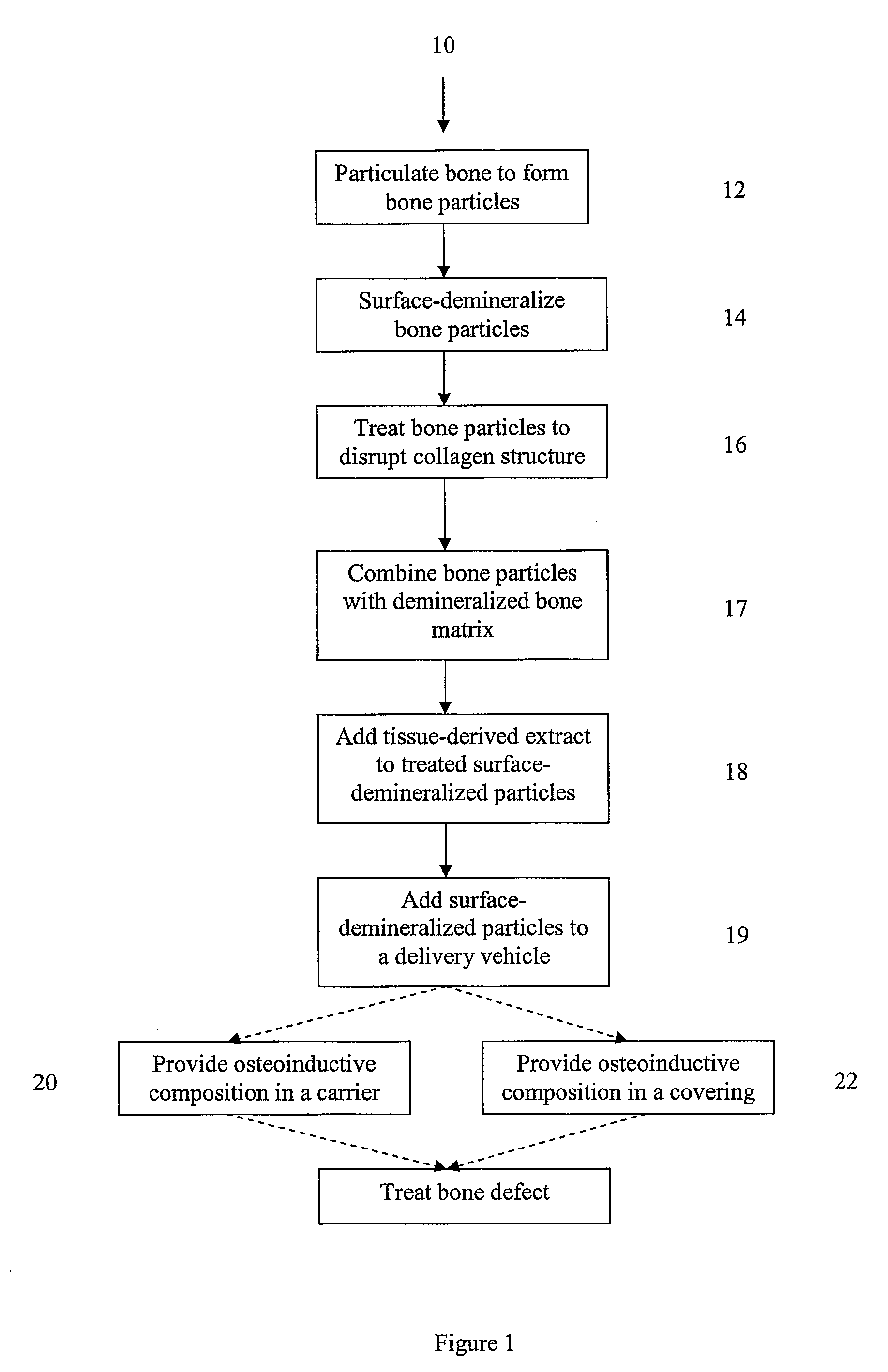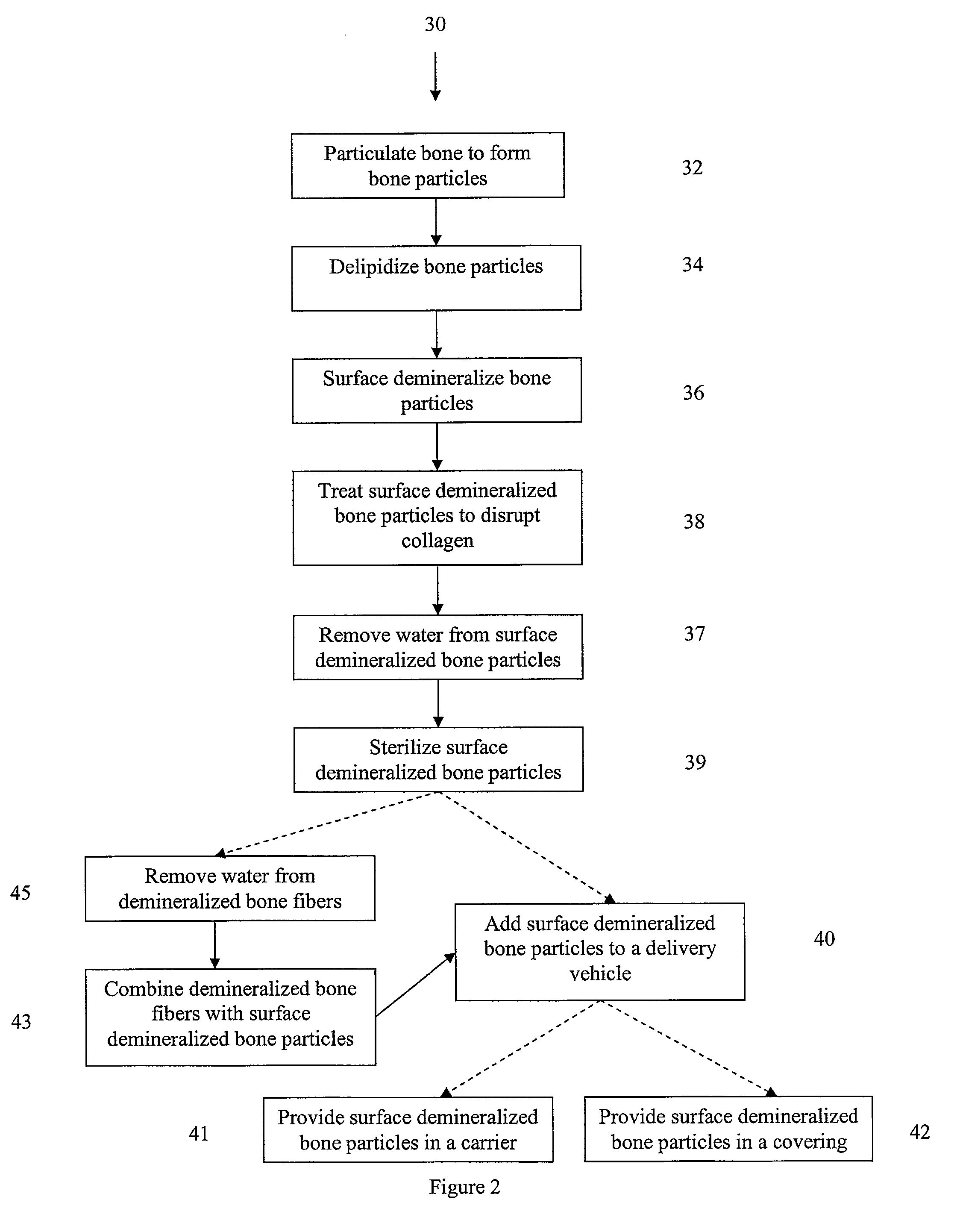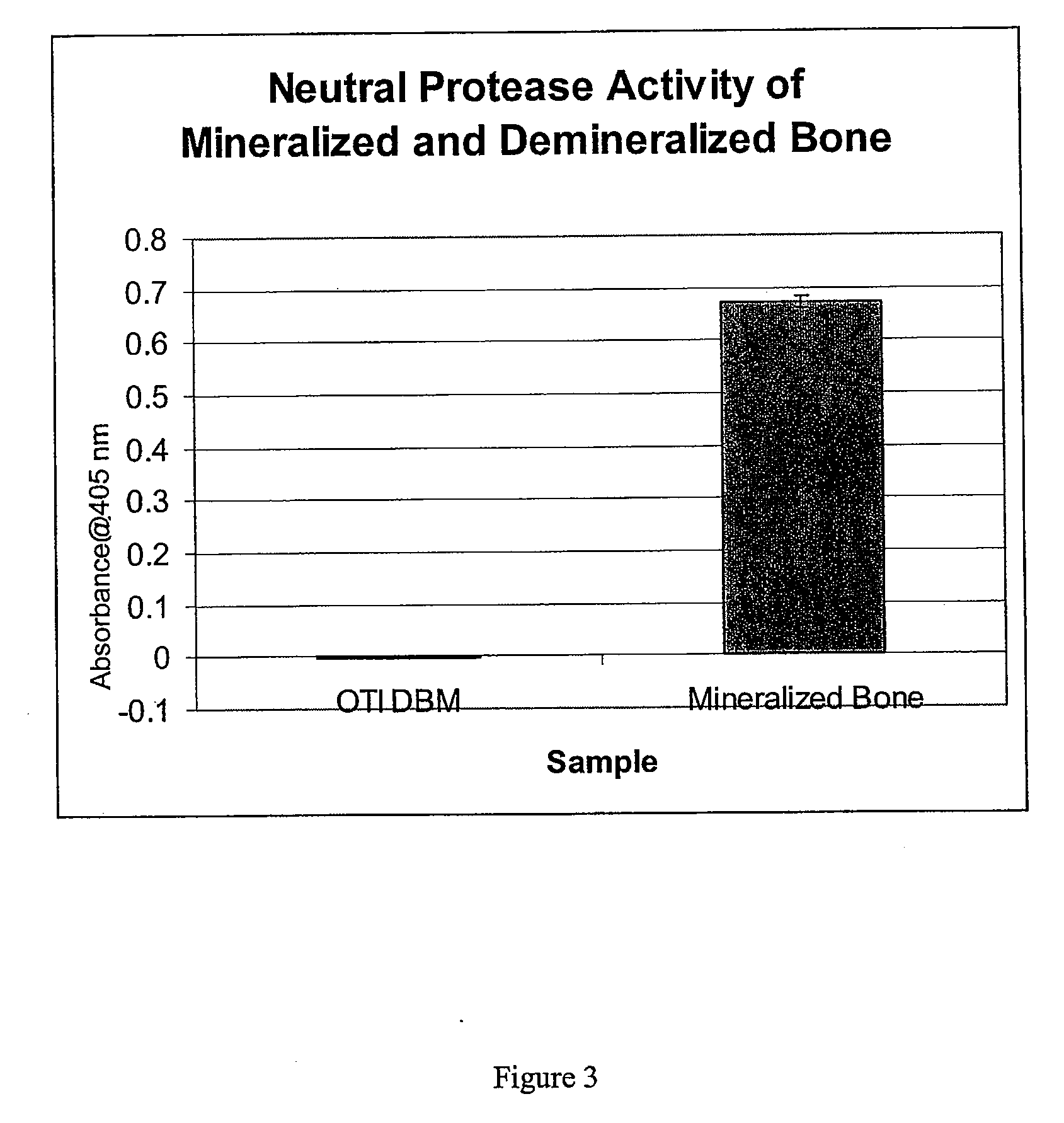Bone matrix compositions and methods
a bone matrix and composition technology, applied in the field of bone matrix composition and methods, can solve the problems of only having acb, serious problems for patients and their physicians, cortical bone, etc., and achieve the effect of increasing biological activities
- Summary
- Abstract
- Description
- Claims
- Application Information
AI Technical Summary
Benefits of technology
Problems solved by technology
Method used
Image
Examples
example 1
Surface Demineralized Heat Treated Particles
[0208]In one example, bone was cleaned of soft tissue and ground to powder ranging from 2.8 mm to 4 mm. The particles were extracted with 1:1 chloroform-methanol for 6 hours. The solvent was then decanted and the excess allowed to evaporate under a fume hood overnight. The particles were then vacuum dried overnight.
[0209]The particles were surface demineralized for 75 minutes in 0.6 N HCl and then washed with distilled water until the pH of the wash exceeded 3.0. The resulting surface demineralized particles were then incubated with agitation in 100 mM phosphate buffer, pH 7.4, containing 6.0 mM NEM and 2.0 mM sodium azide for 72 hours at 37° C.
[0210]The resulting particles were washed two times for 15 minutes in water at room temperature. The particles were lyophilized and implanted in a sheep femoral defect; the results were examined by micro-CT analysis 4 weeks and 13 weeks post-implantation.
[0211]FIG. 5 illustrates the 13 week results ...
example 2
Surface Demineralized Heat Treated Particles
[0212]The particles are prepared as described in Example 1 excepting incubation in phosphate buffer.
example 3a
Smaller Surface Demineralized Heat Treated Particles
[0213]Particles were ground to a size ranging from 1 mm to 2.8 mm and demineralized in 0.6N HCl for 60 minutes prior to heat treatment as described in Example 1.
PUM
 Login to View More
Login to View More Abstract
Description
Claims
Application Information
 Login to View More
Login to View More - R&D
- Intellectual Property
- Life Sciences
- Materials
- Tech Scout
- Unparalleled Data Quality
- Higher Quality Content
- 60% Fewer Hallucinations
Browse by: Latest US Patents, China's latest patents, Technical Efficacy Thesaurus, Application Domain, Technology Topic, Popular Technical Reports.
© 2025 PatSnap. All rights reserved.Legal|Privacy policy|Modern Slavery Act Transparency Statement|Sitemap|About US| Contact US: help@patsnap.com



